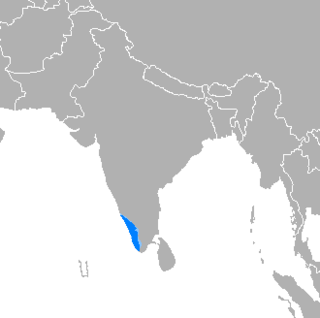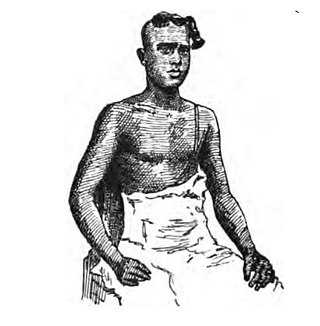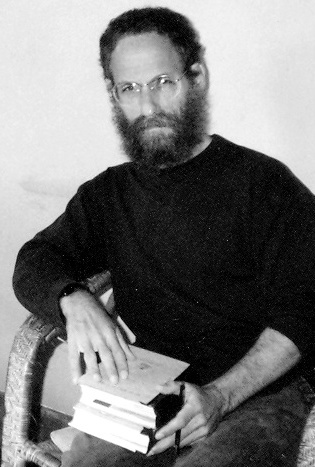
Malayalam is a Dravidian language spoken in the Indian state of Kerala and the union territories of Lakshadweep and Puducherry by the Malayali people. It is one of 22 scheduled languages of India. Malayalam was designated a "Classical Language of India" in 2013. Malayalam has official language status in Kerala and Puducherry (Mahé), and is also the primary spoken language of Lakshadweep and is spoken by 34 million people in India. Malayalam is also spoken by linguistic minorities in the neighbouring states; with a significant number of speakers in the Kodagu and Dakshina Kannada districts of Karnataka, and Kanyakumari and Nilgiris district of Tamil Nadu. It is also spoken by the Malayali Diaspora worldwide, especially in the Persian Gulf countries, due to the large populations of Malayali expatriates there. They are a significant population in each city in India including Mumbai, Bengaluru, Delhi, Kolkata, Pune etc. Malayalam is closely related to the Tamil language.

Malayalam, the lingua franca of the Indian state of Kerala and the union territories of Lakshadweep and Puduchery, is one of the six classical languages of India. Malayalam literature comprises those literary texts written in Malayalam, a South-Dravidian language spoken in the Indian state of Kerala. The first travelogue in any Indian language is the Malayalam Varthamanappusthakam, written by Paremmakkal Thoma Kathanar in 1785. Malayalam literature has been presented with 6 Jnanapith awards, the second-most for any Dravidian language and the third-highest for any Indian language.

Thunchaththu Ramanujan Ezhuthachan was a Malayalam devotional poet, translator and linguist. He was one of the prāchīna kavitrayam of Malayalam literature, the other two being Kunchan Nambiar and Cherusseri. He has been called the "Father of Modern Malayalam", the "Father of Modern Malayalam Literature", and the "Primal Poet in Malayalam". He was one of the pioneers of a major shift in Kerala's literary culture. His work is published and read far more than that of any of his contemporaries or predecessors in Kerala.
The Malayali people are a Dravidian ethnolinguistic group originating from the present-day state of Kerala in India, occupying its southwestern Malabar coast. They are predominantly native speakers of the Malayalam language, one of the six Classical languages in India. The state of Kerala was created in 1956 through the States Reorganisation Act. Prior to that, since the 1800s existed the Kingdom of Cochin, the Kingdom of Travancore, Malabar District, and South Canara of the British India. The Malabar District was annexed by the British through the Third Mysore War (1790–92) from Tipu Sultan. Before that, the Malabar District was under various kingdoms including the Zamorins of Calicut, Kingdom of Tanur, Arakkal kingdom, Kolathunadu, Valluvanad, and Palakkad Rajas.
The Niranam poets, also known as the Kannassan poets, were three poets from the same family by the names of Madhava Panikkar, Sankara Panikkar, and Rama Panikkar. They hailed from Niranam, a small village in southern Kerala, India, near the town of Thiruvalla. Their works mainly comprised translation and adaptation of Sanskrit epics and Puranic works and were for devotional purposes. They lived between 1350 and 1450 C.E.

Vallathol Narayana Menon was a Malayalam poet and one of the triumvirate of modern Malayalam poetry, along with Asan and Ulloor. The honorific Mahākavi was applied to him in 1913 after the publication of his MahakavyaChitrayogam. He was a nationalist poet and wrote a series of poems on various aspects of the Indian freedom movement. He also wrote against the caste system, the tyranny of the British and Brahmanas and other social orthodoxies.He founded the Kerala Kalamandalam and is credited with revitalising the traditional Keralite dance form known as Kathakali.

Manipravalam is a macaronic language found in some manuscripts of South India. It is a hybrid language, typically written in the Grantha script, which combines Sanskrit lexicon and Dravidian morpho-syntax. According to language scholars Giovanni Ciotti and Marco Franceschini, the blending of Tamil and Sanskrit is evidenced in manuscripts and their colophons over a long period of time, and this ultimately may have contributed to the emergence of Manipravalam. However, the 14th century Sanskrit work Lilatilakam states that Manipravalam is a combination of Dravidian and Sanskrit. Generally, it is agreed that it was a combination of Middle Tamil and Sanskrit.

The culture of Kerala has developed over the past millennia, influences from other parts of India and abroad. It is defined by its antiquity and the organic continuity sustained by the Malayali people. Modern Kerala society took shape owing to migrations from different parts of India and abroad throughout Classical Antiquity.
Vatteluttu, popularly romanised as Vattezhuthu, was a syllabic alphabet of south India and Sri Lanka used for writing the Tamil and Malayalam languages.

The Nambudiri, also transliterated as Nampoothiri, Nambūdiri, Namboodiri, Namboothiri and Nampūtiri, are a Malayali Brahmin caste, native to what is now the state of Kerala, India, where they constituted part of the traditional feudal elite. As the highest ranking caste in South India, they owned a large portion of the land in the region of Malabar until the Kerala Land Reforms starting in 1957, and intermarried with the Nair monarchs and aristocracy through Sambandham. This marriage relation between the Nambudiris, who were feudal Brahmin priests, and the Nairs, who were kings and warriors, formed a crucial aspect in the administration (Jenmi) of colonial Kerala. The Nambudiris have traditionally lived in ancestral homes known as Illams and have been described by anthropologist Joan Mencher as, "A wealthy, aristocratic landed caste of the highest ritual and secular rank." Venerated as the carriers of the Sanskrit language and ancient Vedic culture, the Nambudiris held more power and authority than the kings and were "above and outside the political systems of the kingdoms." Adi Shankara, one of the most revered Vedic scholars of Hinduism, was a Nambudiri ascetic who initiated the protocol of permitting only Nambudiris to lead as the Chief Priest at the Badrinath Temple, one of the holiest temples for Hindus. Furthermore, the spiritual leader of the Nambudiri Brahmins is given the title Azhvanchery Thamprakkal Samrāṭ, with the word "Samrāṭ" meaning "Emperor" in the Sanskrit language. Aside from holding rights over the sacred Guruvayur Temple, the presence and blessings of the Azhvanchery Thamprakkal was a ritual necessity during the coronation of the Zamorin, the Nair king of Kozhikode.

Sheldon I. Pollock is an American scholar of Sanskrit, the intellectual and literary history of India, and comparative intellectual history. He is the Arvind Raghunathan Professor of South Asian Studies at Columbia University. He was the general editor of the Clay Sanskrit Library and the founding editor of the Murty Classical Library of India.
Extinct Kannada literature is a body of literature of the Kannada language dating from the period preceding the first extant work, Kavirajamarga.

Talagunda is a village in the Shikaripura taluk of Shivamogga district in the state of Karnataka, India. Many inscriptions found here have provided insights into the rise of the Kadamba Dynasty.
S. Guptan Nair was an Indian scholar, academic, critic and writer of Malayalam literature. Known for his literary works as well as for his oratorical skills, Nair was a prolific writer with over 35 books to his credit. He was a distinguished fellow of the Kerala Sahitya Akademi and a recipient of several honours including Kendra Sahitya Academy Award, Kerala Sahitya Akademi Award, Vayalar Award, Vallathol Award and Ezhuthachan Puraskaram, the last one being the highest literary award of the Government of Kerala.
Omchery N. N. Pillai is an Indian Malayalam–language playwright, novelist and poet from Kerala. He has written nine full-length plays, more than 80 one-act plays and a few novels. His plays are noted for their bold experiments in form and technique as well as the uncommon vision inherent in many of the themes. He won the Kerala Sahitya Akademi Award twice: in 1972 for the play Pralayam and in 2010 for his overall contribution to Malayalam literature. In 2022, he was honoured with Kerala Prabha Award, second highest civilian award given by the Kerala Government.
Lilatilakam is a 14th century Sanskrit-language treatise on the grammar and poetics of the Manipravalam language form, a precursor of the modern Malayalam language spoken in the Kerala state of India.

Cheraman Perumal dynasty, also known as the Perumal dynasty of Kerala, or Chera Perumals of Makotai, were a ruling dynasty in present-day Kerala, South India. Mahodayapuram, or Makotai, the seat of the Cheraman Perumals, is identified with present-day Kodungallur in central Kerala. Initially, their influence appeared limited to the area between present-day Quilon and Quilandy, but later extended to up to Chandragiri river in north Kerala and to Nagercoil in the south.

Old Malayalam, inscriptional language found in Kerala from c. 9th to c. 13th century CE, is the earliest attested form of Malayalam. The language was employed in several official records and transactions. Old Malayalam was mostly written in Vatteluttu script. Most of the inscriptions were found from the northern districts of Kerala, those lie adjacent to Tulu Nadu. The origin of Malayalam calendar dates back to year 825 CE.
Middle Malayalam is the period of the Malayalam language spanning from 13th century to 15th century AD.











